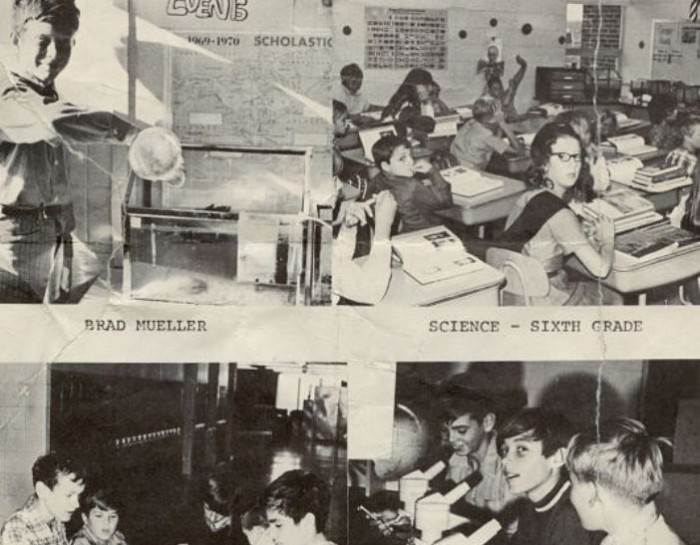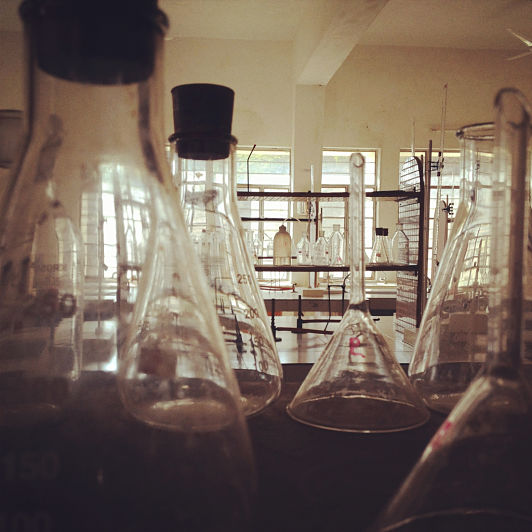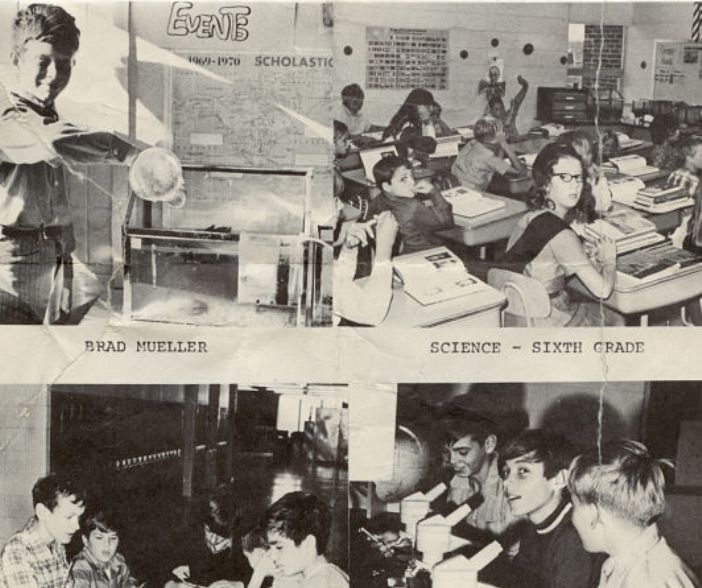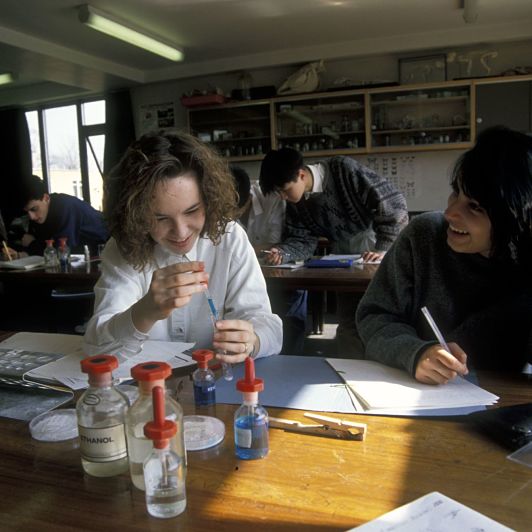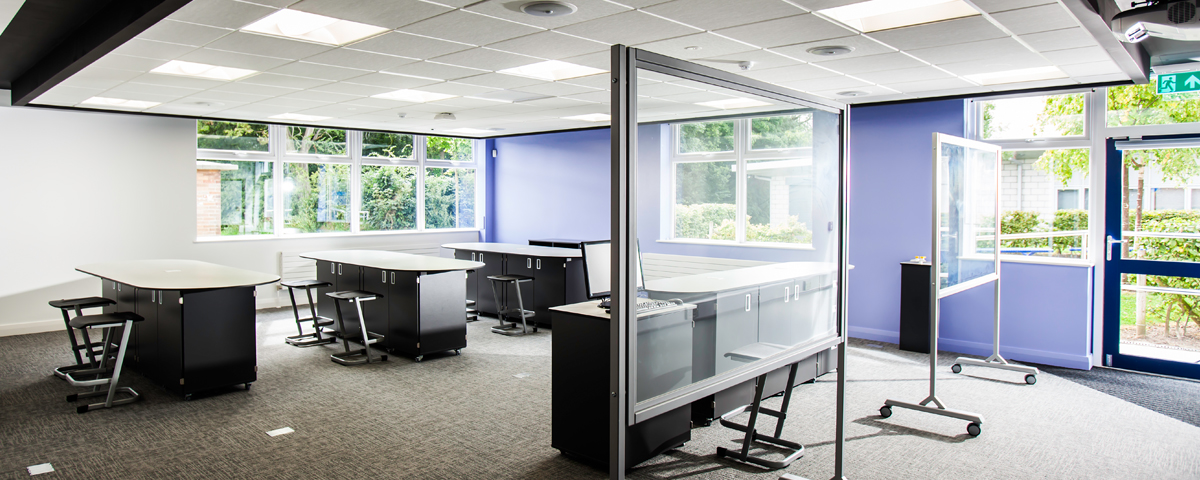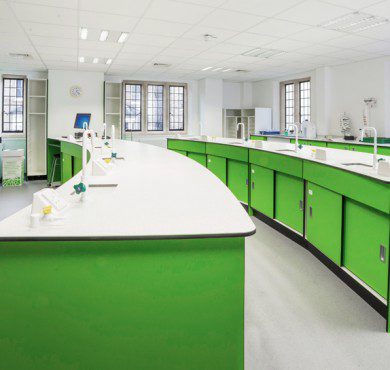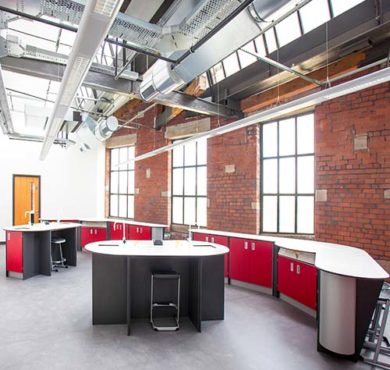School Science Labs through the Decades – How times have changed!
School science laboratories have changed dramatically over the years. In this article, we’re going to take a trip down memory lane and explore the changes that have taken place in science classrooms from the 60s to the present day…
1960’s
Perhaps the most notable difference between school furniture of the 1960s and the current day is the size of the desks and chairs in the classroom. The British Educational Supplier Association revealed in 2008 that schoolchildren of the 21st century are significantly larger than those in the 1960s. Not only were the school furnishings of the 1960s smaller than current models, but they were also less varied – with modern school furniture suppliers now designing products to accommodate students of a wide range of shapes and sizes.
Science classrooms experienced a big change during this decade. The Nuffield Secondary Science project was devised to make school science lessons more relevant to students. By putting into practice a report called Half Our Future that put emphasis (among other things) on practical lessons, it was hoped that more students would engage with science.
1970’s
A great decade for independent study, with a number of personal study aids entering schools. Although primarily used in maths classrooms, personal calculators were making an appearance in school science labs, which helped students to add up results and create mean averages.
This had a huge influence on the classroom layout and the furniture choices made by schools. Accommodating increased levels of independent study – a number of schools adapted the wraparound desk which was pioneered in the US in the 1970s.
1980’s
Although prehistoric by today’s standards, the computers introduced to classrooms in the 1980s wowed students. As home computers were practically non-existent, the school computer was often the students’ only chance to explore this new technology. Science (particularly physics) was among the subjects which benefitted the most from the inclusion of computers in the classroom.
Students were given the chance to explore new scientific discoveries on Apple Macintosh and DOS computers. Unfortunately due to the high price of the new technology, students would often have to share a single computer between a whole class (or even the entire school).
Copyright (c) 1995 Rex Features.
1990’s
The whiteboard was the biggest change to school furnishing during the 90s. The interactive whiteboard introduced a range of benefits, including computer connectivity, touch sensitivity and even projector screens. This allowed science teachers to combine multiple resources and their own knowledge to educate their classes.
The interactive whiteboard has proven to be enduringly popular, and features in many classrooms to this day.
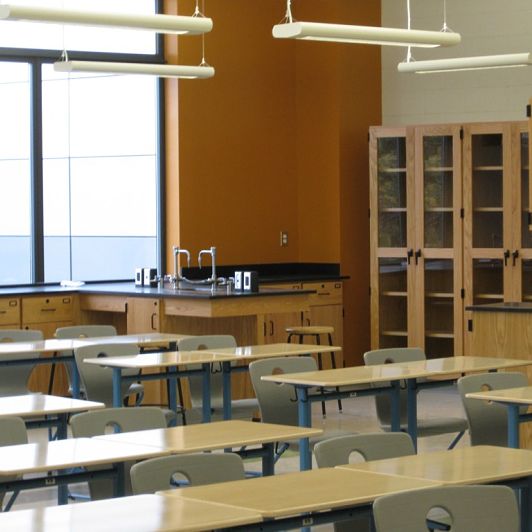
2000’s
The 00s saw a move away from traditional wooden furnishings to more durable modern alternatives. Hardwearing, high-performing materials such as Corian, Velstone and Avonite were used in school science laboratories during this period.
Many of these hard-wearing and durable materials were used throughout schools – but were perhaps most beneficial for students of the sciences. The materials proved to be more resilient to the effects of hazardous chemicals and potentially dangerous apparatus, used during practical science lessons.
2010’s
Although we are only halfway through this decade, there have been significant classroom design advances in the 2010s. A number of studies into the effects of classroom design have been conducted by academics to determine the perfect learning environment for students. Naturally this leads to more informed classroom and school science lab design.
The decade has overseen a number of unique and unusual school desk concepts such as the standing desk. With scientific research to support the benefits of standing during class – it could become a popular fixture before the decade is over.
Contact
If you’re interested in revitalising your school science laboratory, or if you would like more information on how we can help you create a functional learning environment, read more on our school laboratory page or call our experienced team on 0161 477 5300.

